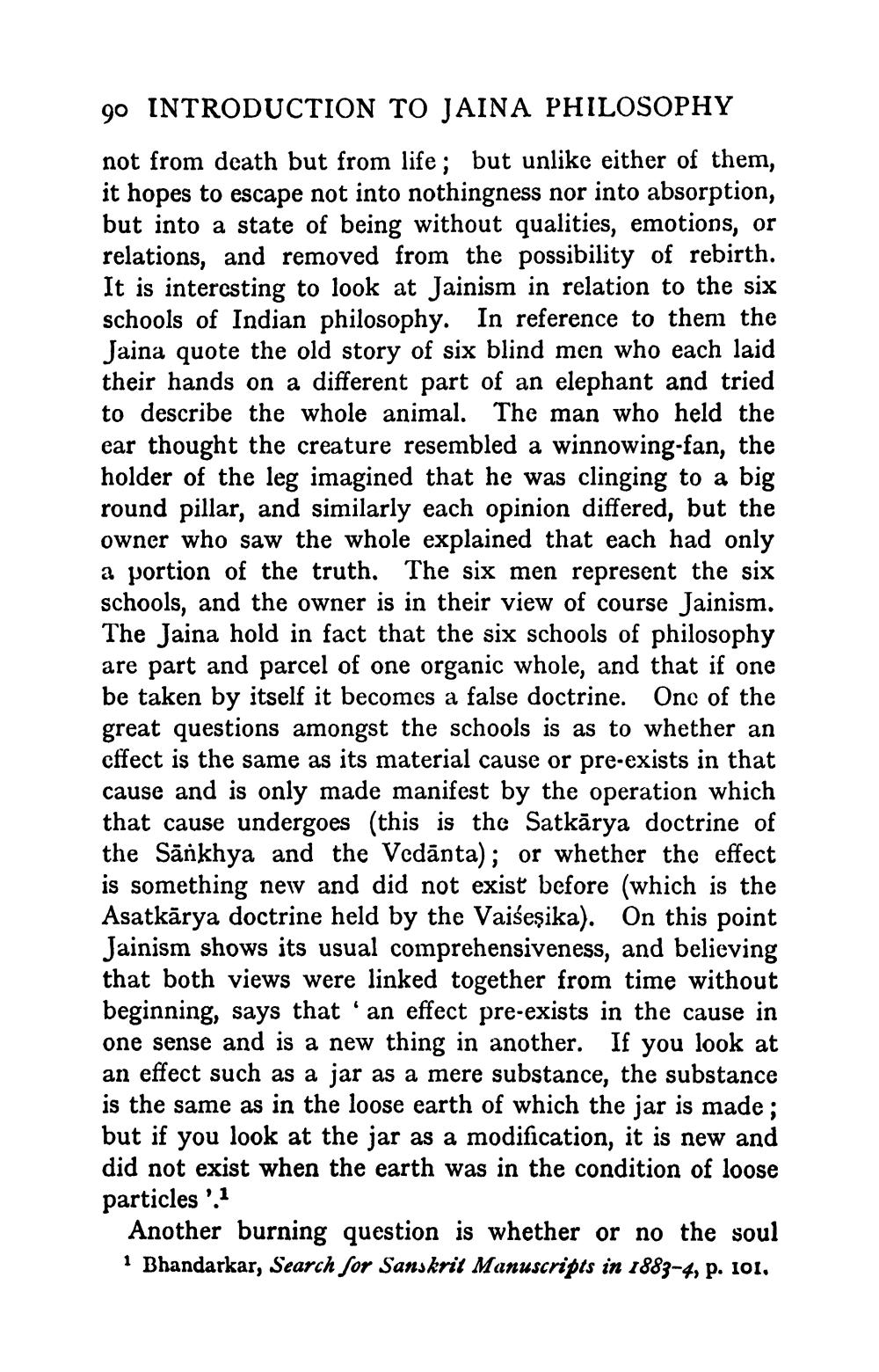________________
90 INTRODUCTION TO JAINA PHILOSOPHY not from death but from life; but unlike either of them, it hopes to escape not into nothingness nor into absorption, but into a state of being without qualities, emotions, or relations, and removed from the possibility of rebirth. It is interesting to look at Jainism in relation to the six schools of Indian philosophy. In reference to them the Jaina quote the old story of six blind men who each laid their hands on a different part of an elephant and tried to describe the whole animal. The man who held the ear thought the creature resembled a winnowing-fan, the holder of the leg imagined that he was clinging to a big round pillar, and similarly each opinion differed, but the owner who saw the whole explained that each had only a portion of the truth. The six men represent the six schools, and the owner is in their view of course Jainism. The Jaina hold in fact that the six schools of philosophy are part and parcel of one organic whole, and that if one be taken by itself it becomes a false doctrine. Onc of the great questions amongst the schools is as to whether an cffect is the same as its material cause or pre-exists in that cause and is only made manifest by the operation which that cause undergoes (this is the Satkārya doctrine of the Sänkhya and the Vedānta); or whether the effect is something new and did not exist before (which is the Asatkārya doctrine held by the Vaišeşika). On this point Jainism shows its usual comprehensiveness, and believing that both views were linked together from time without beginning, says that 'an effect pre-exists in the cause in one sense and is a new thing in another. If you look at an effect such as a jar as a mere substance, the substance is the same as in the loose earth of which the jar is made; but if you look at the jar as a modification, it is new and did not exist when the earth was in the condition of loose particles ':1
Another burning question is whether or no the soul 1 Bhandarkar, Search for Sanskrit Manuscripts in 1883-4, p. 101.




